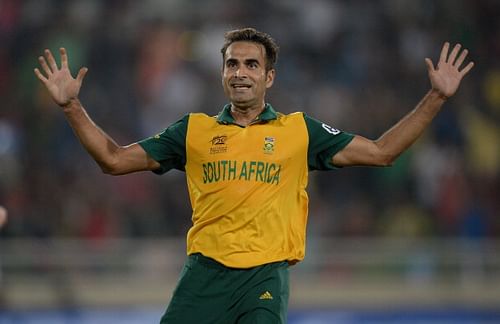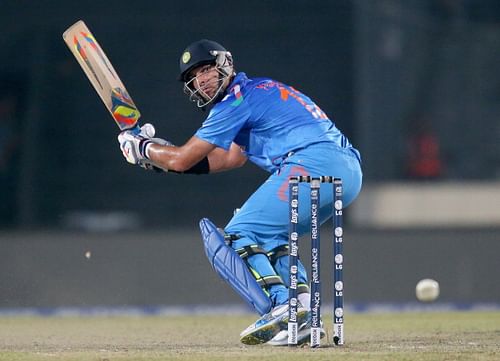
Bowl dots for wickets - A new rule that bowlers deserve in cricket

50 years ago, a bowler's effectiveness was measured by the number of wickets he took. The strike rate was the criterion that separated the best from the good.
20 years later, with the advent of one-day internationals, a bowler's ability to bowl economically was given a slightly higher priority. Hence, a bowler's average was looked into as a factor to decide how valuable he was to the team.
Decades have flown. Batsmen have come and gone. From being the bullies themselves once, bowers are now being bullied. The mantra of batting has changed. It has evolved into a novel state, which no one would have fathomed a couple of decades ago. Batting has become ridiculously easy while bowlers have been relegated to the level of war prisoners who are at the mercy of the batsmen.
Do the best bowlers get wickets in T20s?
When batsmen find Sunil Narine a tough proposition, they look to play him safely while going after the bowler at the other end. In the process, the relatively weaker bowler manages to pick up wickets while the one who actually deserves the credit, goes unnoticed.
Survival has become the only expectation for bowlers. We hardly see many bowlers looking to bowl fast. Most of them are content with bowling lines and lengths that the batsmen would be courteous enough to avoid whacking. Spinners no more flight the ball.
But we do still find bowlers who make batsmen shudder at the sight of them approaching the bowling crease. Dale Steyn, Lasith Malinga and Sunil Narine are a few of the bowlers who have the prerogative of the batsmen's respect. Yet, do we see them top the table of highest wicket-takers in tournaments?
The best example would be the recently concluded WorldT20 2014. Sunil Narine, Rangana Herath, Lasith Malinga, Nuwan Kulasekara and Sachitra Senanayake all bowled overs that on, an average, went below 7 an over. Kulasekara, Herath and Narine bowled 6 maiden overs among them.
The leading wicket-takers in the tournament were mostly players who came from oblivion, and the rest were bowlers whom the batsman would not consider a threat. Samuel Badree and Imran Tahir were never spoken much of before their swashbuckling performances in the WT20. Ravichandran Ashwin, though a canny bowler, has never been someone who could trouble the batsmen as much as Narine or Malinga. Perhaps Amit Mishra was the only one in the list who can be said to be capable of extorting wickets from the batsmen.

The reason why Samuel Badree and Imran Tahir were successful was because batsmen didn’t know their strengths. Perhaps after their performance in the WT20, batsman would look to play them safely, which would hamper their wicket-taking ability in the future. Most of Ashwin's wickets came when batsmen tried to attack him. When asked to name the best bowlers of the tournament, you wouldn't hear Lasith Malinga, Narine, Kulasekara or Sachithra Senanayake get a mention.
Many would not know that there exists another list which played an indelible part in the success of teams in the WT20. Sunil Narine gave away only 4.6 runs per over. Herath and Sachithra Senanayake went only for 4.6 and 4.88 runs per over respectively. Malinga and Kulasekara went below 7 runs an over. Yet their wickets column is relatively inaudible.
Batsman are more than happy to avoid giving wickets to Narine and Malinga. What that does is, it forces batsmen to look for scoring options against other bowlers. Hence, more often than not, you find bowlers bowling in tandem with these two, reaping the results of the hard work done by Narine and Malinga. Wicket-takers who benefit from the control these two exercise become stars while Narine and Malinga become unsung heroes.
In an era where bowlers who can threaten batsmen have become a rarity, isn't it paramount to reward these rare species with much more than just dot balls?
New rule suggestion: dot balls for wickets
What if the bowler is rewarded with wickets for bowling dot balls? If a bowler manages to bowl three dot balls on the trot, isn't that a feat that should be credited with a wicket? Though this may have no relevance in Test or ODI cricket, it definitely has a case in T20Is.
Bowlers who can bamboozle the batsmen with the swing or spin they engender will definitely be more rewarded and profited if this becomes a rule. Moreover, batsmen will be forced to find new alternatives in contending with bowlers like Malinga and Narine. On the other hand, these bowlers will have opportunities to pick up wickets since batsmen are forced to score against them.
In addition, batsmen will have to be technically well endowed in order to counter bowlers who spin, swing and seam the ball. Batting would require more than just slogging. The batsmen's ability to use their feet and wrists would be tested.
Just imagine a batsman like Virat Kohli or Glenn Maxwell. When they start to dominate the bowling, chances for bowlers to keep these players off strike become lean. Even keeping tail-enders on strike when a proper batsman is at the other end is an uphill task. But when Narine or Malinga, both of whom can easily dominate the batting, bowl, keeping them at bay is an easy task for the batsman since the margin of error for them is way higher than that for bowlers.
It is true that batting has become super easy. So shouldn't bowlers be given some respite while the batsmen who enjoy the luxury of good batting tracks, small grounds and heavy bats be given some menace? If three successive dots seem too much, it can be raised to 4 or even 5. At least batsmen who play out maiden overs should be penalized with their wicket.
Bowlers deserve an equal footing
As Martin Crowe put it, T20 is the laboratory of cricket; it is all about entertainment. But why is it that only bowlers should be victimized in the process of revving up the entertainment cricket dishes out? Isn't a middle stump yorker that pegs the middle stump back as entertaining as a six over mid-wicket? Doesn't a direct hit from backward point at the non-striker’s end require as much skill as a scoop shot over the keeper's head for a boundary?
So why should only batsmen entertain and bowlers be made scapegoats?

The major rule tweak for entertainment with the advent of T20 has been the free hit. While a bowler already had to endure the penalty of having to re-bowl together with relinquishing an extra run in the case of bowling a no-ball, the rule tweak has made sure the batsman cannot get out on the ball that succeeds the no-ball, rubbing salt on the wound for the bowler. This allows a batsman to look for a boundary since his stay at the crease is guaranteed, adding to the entertainment.
It's high time that batsmen endure some pain in their bid to entertain the crowd. Just imagine the context when the batsman has played out two dot balls. The situation would be the same as a case where one run off the final ball is required for a win. The field may be brought in, asking the batsman to manufacture a shot to pierce the gaps or to go over the top. There can be hits and misses. There can be miscues in the air that can be caught. The batsman might want to run byes. Keepers may have to stand closer to stumps.
The batting team may have to decide which batsman, the striker or non-striker, is valuable. Not only the striker, even the non-striker is susceptible to lose his wicket in the process of having to complete a hasty single to preserve one of his team's wickets. Should the non-striker be a better batsman than the striker, then the striker might be asked to hit big and the non-striker might refuse a risky single.
Envisage what this could have done to India in the WT20 final, 2014. Yuvraj Singh may have been out before he could play those frustrating 21 balls. Or else he would have been forced to conjure a run on the third ball after two dots to shield himself. Kohli may have got himself run-out in the process of having to complete a run, adding to the drama.
In a practical world, Kohli may have turned down a single, leaving Yuvraj stranded mid-pitch, lamenting his fate. In a fantasy world, Yuvraj, perceiving the reality, would have coerced himself to whack the ball and would have ended up hitting a six, which could have been the epiphany that brought momentum into his innings. Whatever the outcome would have been, it would have definitely spiced up the proceedings.

A new era for bowlers in cricket
Bowlers who can make batsmen shiver in fear play an integral part in their respective teams but are often deprived of the limelight. Cricket is a cruel game where wicket-takers are exalted while the silent servers continue to live in darkness. Of course, the present generation might hail them as good bowlers, but 20 years down the line, the next generation would look at their numbers and would wonder what was so sparkling about them.
A bowler's average and strike rate, both of which are governed by the wickets he takes, does not show how effective he truly is. Though there is a factor called economy rate, it is only mentioned sparingly when a bowler's distinction is measured.
The best bowlers are measured by the number of wickets they have to their name. In T20s, bowlers who are attacked by batsmen enjoy the luxury of picking up wickets. To be more accurate, batsmen gift these bowlers with wickets. But in the case of the rare category of bowlers like Narine and Malinga, who are not gifted with wickets but extract wickets, they are made to look second to these opportunist bowlers.
If this rule can be brought into effect, it would bestow bowlers of this calibre the chance of picking up bucketfuls of wickets. The batsmen's survival mode against these bowlers would be made harder to access.
That said, this is a contentious opinion, leaving a lot of ground for arguments and debates.